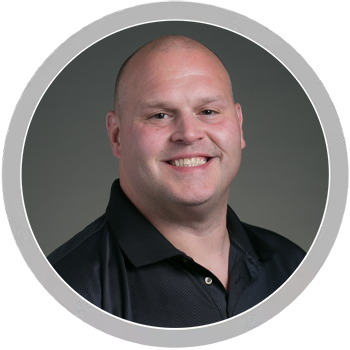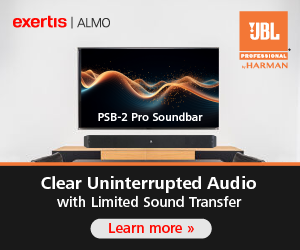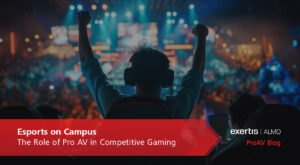The Rise of Audio Tracking PTZ Cameras: Enhancing Engagement & Meeting Equity
The world of ProAV conferencing technology is evolving rapidly, with one of the most groundbreaking advancements being audio tracking PTZ (Pan-Tilt-Zoom) cameras. These sophisticated devices offer a blend of high-quality video and advanced audio tracking, revolutionizing how we experience meetings and collaborations. In this blog, we’ll delve into what these cameras are, how they work, their applications, and the benefits they bring.
What Is an Audio Tracking PTZ Camera?
Audio tracking PTZ cameras are innovative systems that merge traditional video capabilities with advanced audio tracking technology. They can pan, tilt, and zoom to follow subjects, while also capturing and focusing on audio sources. This dual functionality provides a comprehensive view, enhancing both visual and auditory experiences.
Key Features
- Pan-Tilt-Zoom Capabilities: These cameras can move horizontally (pan), vertically (tilt), and zoom in or out, covering a broad area and allowing precise focus on subjects.
- Audio Tracking: Equipped with microphones and sophisticated algorithms, these cameras detect and track sound sources, ensuring clear audio capture. Some cameras have these audio sensors or microphones built in, while others utilize a partner in microphone technology that allows the two to work in tandem with each other.
- High-Definition Video: They typically offer high-resolution video (1080P or 4K quality), providing detailed and clear footage that ensures every participant can see and be seen with precision.
- Smart Technology Integration: Many models incorporate AI to follow presenters visually and work with microphones or microphone arrays to enhance tracking, improving meeting equity and participant engagement.
 How Do They Work?
How Do They Work?
Audio tracking PTZ cameras blend audio sensors with visual tracking technology. When a sound is detected, the camera analyzes the audio input to determine the direction of the sound source. Using built-in algorithms, the camera adjusts its position to follow the sound while capturing video footage.
The Tracking Process:
- Sound Detection: The camera’s microphones or a paired microphone array pick up surrounding sounds.
- Audio Localization: The system analyzes the audio data to determine the direction and distance of the sound source.
- Camera Adjustment: The PTZ mechanism moves the camera to focus on the sound source while maintaining high-quality video capture.
- Continuous Monitoring: The camera continues to track the sound source in real-time, adapting, as necessary.
Applications of Audio Tracking PTZ Cameras
Conference Rooms & Meeting Spaces: These cameras enhance corporate collaboration by providing clear video and audio, improving the overall meeting experience. This has been a game changer for conducting remote Video Conferencing Platforms like Zoom, Microsoft Teams, and Google Meet, for example. Aside from corporate meeting spaces, these camera solutions are perfect for courtroom and government applications where clear video and audio are crucial for accurate communication and documentation.
![]()
Events & Live Productions: For event organizers, these cameras can enhance live-streaming experiences. By following speakers and capturing their audio, they create a more engaging experience for online viewers. For example, House of Worship (HOW) projects have benefitted greatly from this technology as congregants are able to see and hear their religious leader and the information they share more clearly.
Education & Lecture Capture: In educational settings, audio tracking PTZ cameras can be utilized for remote learning applications, allowing teachers and professors to move around the classroom while ensuring that students at home can both see and hear everything clearly. Turning a PTZ camera into an auto-tracking camera also uses live data from microphones to track a presenter or teacher as they move across a stage or room. This makes for an ideal system for lecture capture scenarios.
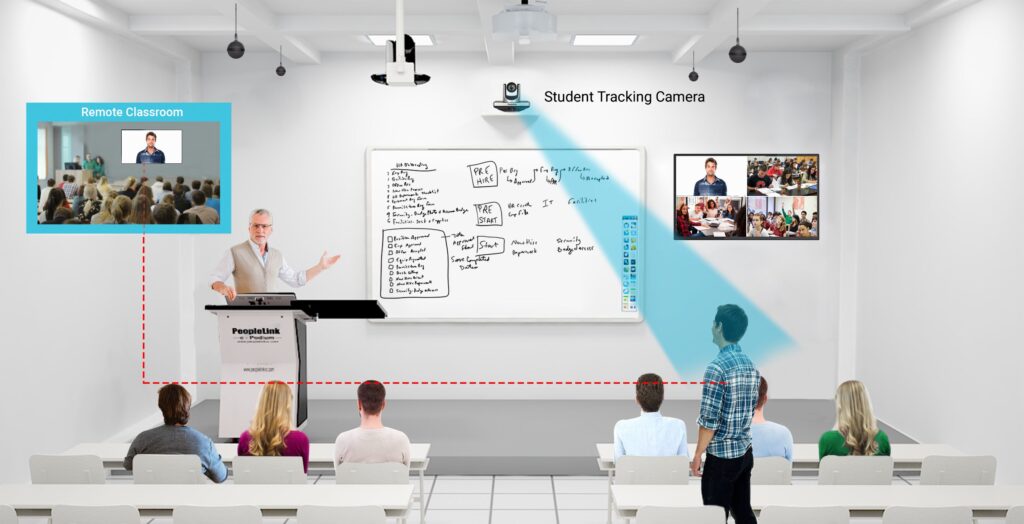
Training & Presentation Environments: In any training environment, these audio tracking camera and microphone systems ensure that the focus is on the presenter teaching valuable information. Important conversations and clear video of the speaker are critical for a successful experience in a learning environment, especially for remote participants.
Benefits of Audio Tracking PTZ Cameras
- Enhanced Situational Awareness: By integrating audio with video, users gain a more complete understanding of the events as they unfold.
- Reduced Blind Spots: The dynamic tracking capabilities ensure that no significant activity goes unnoticed, effectively making sure that the focus is on the speaker.
- Increased Engagement: Enhanced audio and visual capture keep audiences engaged, whether in events or educational settings.
Conclusion
![]() Audio tracking PTZ cameras mark a significant advancement in conferencing technology, merging high-quality audio with versatile video monitoring. They offer a comprehensive solution for a range of applications, from corporate meetings to educational environments. As technology advances, these cameras will continue to offer smarter, more effective AV solutions. Whether you’re enhancing a meeting space or improving remote learning, audio tracking PTZ cameras could be the key to unlocking greater engagement and equity in your collaborations and communications.
Audio tracking PTZ cameras mark a significant advancement in conferencing technology, merging high-quality audio with versatile video monitoring. They offer a comprehensive solution for a range of applications, from corporate meetings to educational environments. As technology advances, these cameras will continue to offer smarter, more effective AV solutions. Whether you’re enhancing a meeting space or improving remote learning, audio tracking PTZ cameras could be the key to unlocking greater engagement and equity in your collaborations and communications.
Discover the Best in Audio Tracking Camera Solutions with Exertis Almo!
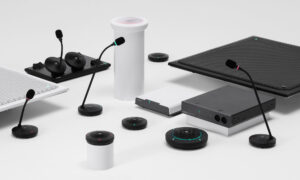 Unlock the full potential of your remote meetings and presentations with our range of cutting-edge audio tracking solutions. At Exertis Almo, we offer everything from state-of-the-art cameras, microphones, and audio interfaces to advanced soundbars and conferencing systems.
Unlock the full potential of your remote meetings and presentations with our range of cutting-edge audio tracking solutions. At Exertis Almo, we offer everything from state-of-the-art cameras, microphones, and audio interfaces to advanced soundbars and conferencing systems.
Elevate your engagement and ensure crystal-clear communication for your upcoming projects. Whether you need noise-canceling technology or seamless integration with your existing setup, we have the perfect solution for you.
For personal assistance and to find the ideal solution for your needs, please reach out to your Exertis Almo representative or contact me directly. We’re here to help you achieve the best experience possible!
If you enjoyed this blog, check out “ProAV Network Switches: A Harmonious Blend of Technology and Performance.“


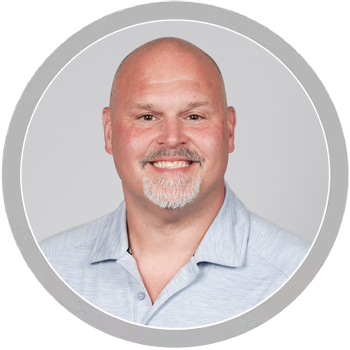
 Imagine a large-scale conference, a live concert, or a corporate presentation. Behind the scenes, there’s a complex network of AV equipment working tirelessly to deliver an immersive experience to the audience. At the heart of this network lies the network switch, serving as a central hub that connects various AV devices such as cameras, microphones, speakers, displays, and media servers.
Imagine a large-scale conference, a live concert, or a corporate presentation. Behind the scenes, there’s a complex network of AV equipment working tirelessly to deliver an immersive experience to the audience. At the heart of this network lies the network switch, serving as a central hub that connects various AV devices such as cameras, microphones, speakers, displays, and media servers.
 As technology continues to evolve, network switches will continue to play a pivotal role in shaping the future of professional AV, enabling new possibilities and pushing the boundaries of what is possible in terms of performance, reliability, and scalability. One network switch manufacturer leading the charge in the Pro AV industry is Netgear. They provide purpose-built layer 3 switches with preconfigured network protocols like IGMP snooping, multicast routing, and fast leave mechanisms, to optimize multicast traffic delivery and conserve network bandwidth. Netgear also continues to develop switches that include certified profile setup configurations including NDI, SRT, Dante, AES, AVB and many others for audio/video/lighting/control. Adding a simplified custom AV user interface that doesn’t require an IT administrator to configure, and generous PoE power for all AV components in the system is a grand slam for Pro AV integrators.
As technology continues to evolve, network switches will continue to play a pivotal role in shaping the future of professional AV, enabling new possibilities and pushing the boundaries of what is possible in terms of performance, reliability, and scalability. One network switch manufacturer leading the charge in the Pro AV industry is Netgear. They provide purpose-built layer 3 switches with preconfigured network protocols like IGMP snooping, multicast routing, and fast leave mechanisms, to optimize multicast traffic delivery and conserve network bandwidth. Netgear also continues to develop switches that include certified profile setup configurations including NDI, SRT, Dante, AES, AVB and many others for audio/video/lighting/control. Adding a simplified custom AV user interface that doesn’t require an IT administrator to configure, and generous PoE power for all AV components in the system is a grand slam for Pro AV integrators.